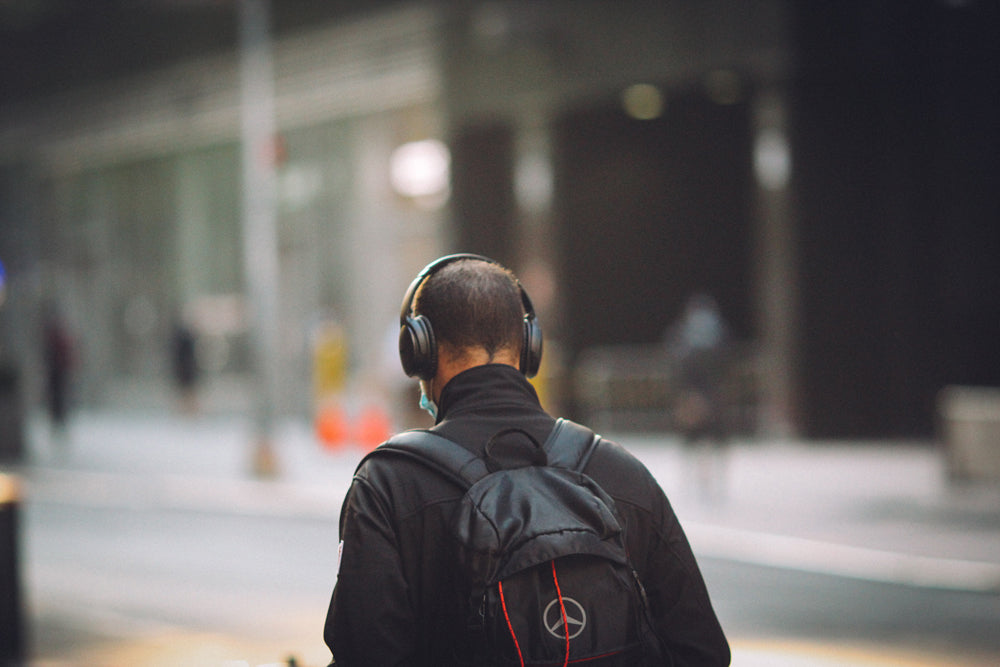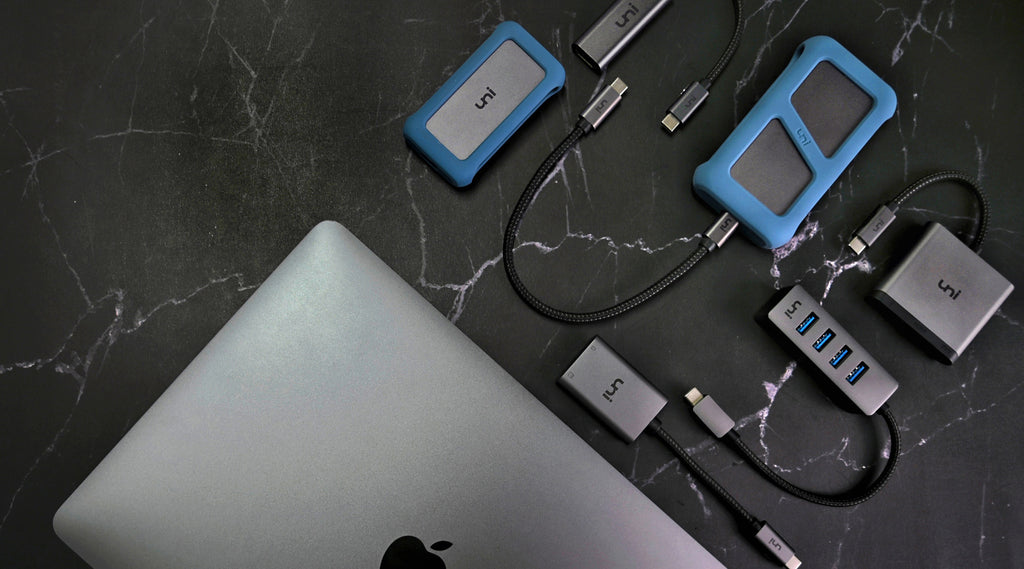How to Pick back-to-school Tech, plus, Gear for Remote Study
September 07, 2022 7 min read 3 Comments

Credit to shutterstock
School is starting up again, and that means it's time to get your gear in order. Virtual learning now has a permanent place in many students ' lives, one way or another.
Whether you're returning to school or just starting out, having all the right gear will help students start the year off on the right foot. Everyone knows having a good Chromebook or laptop helps. Or even a reliable tablet or iPad can make going back to school a little less painful. Actually, you do NOT need all the high-end tech in order to do well at college.
If you can (and you should), save as much money as you can while at college, pay your tuition in full and student loans as soon as possible instead of spending on expensive things like fancy tech gadgets.
You can start by thinking about what works best for you.
A. How to pick a right laptop for you or your love?

Credit to @pragyan93
You can replace your desktop with a laptop, use it to watch movies in bed, or take it on the road to do homework at a friend’s house. The sheer number of choices when it comes to buying a laptop can be a little staggering, especially for new buyers. How to pick the right one?
Determining what you need the most / What is the most common usage scenario for you / most frequently used functions/applications used? What do you plan to do with your laptop?
Set your acceptable budget. Set up a limitation, or set a clear price range.
Then, ask yourself which size you prefer. There are three common different size ranges for a laptop: a netbook, a laptop, or desktop replacement. Although all of these fall into the broader concept of a "laptop", their usability differs and can impact your choice.
If you use a lot of Microsoft Office products, you’ll find the best compatibility with a Windows computer. However, if you’re doing music production or photo editing, you’ll find the most powerful programs on a Mac. Windows supports most video games by far, though support for both Mac and Linux is increasing.
B. How to choose earphones/ headphones before wasting your money?

Credit to @jontyson
Well, actually ask yourself first, if you really need new headphones / earphones!
Since most people these days at least have got one pair of wired headsets, when I recommend you to rethink if you really need a new headset, you must be thinking about a wireless headset, right?
Well, let's skip to the point, how to choose a wireless earphone/ headset?
Step 1
How will you be using them?
Are you looking for headphones that don’t fall off when you jog? Or headphones that block out the world on a crowded plane? How you plan to use your headphones should influence which type you buy. And there are several types.
Step 2
Decide between earbuds(In-ear headphones) or headphones(on-ear/ over-ear, also bone conduction headphones in recent years). Choose which kind of headphones you prefer.
Commonly used headphones are,
- In-ear headphone designs are a lightweight, very portable option; they are inserted into the ear canal or sit just outside the ear canal.
- On-ear headphones, on the other hand, rest directly against your ear, thus allowing you to hear some outside sounds.
- Over-ear headphones, also known as around-the-ear or full-size headphones, have cushioned cups that enclose your ears as they proficiently isolate external sounds. While not as portable as other types of headphones, they can be very comfortable, even when used for extended periods of time.
- Bone conduction headphones. As the headphones sit on your cheek bones, your ear canal is left open and sound waves bypass the eardrum.
Step 3
Set up your budget. And investigate the frequency range. Remember, generally, more expensive headphones are made with higher quality materials and better engineering, improving the sound quality. However, if you are not that into pursuing the ultimate in sound quality, you could just choose the entry level (around $100 and Below) would be enough.
Tips: Don't look for noise-canceling features unless you're willing to shell out the big bucks.
Step 4
Choose a trusted brand.The brand name can also be important. While the likes of Apple, Sennheiser, Shure, JBL, Bose, and Audio Technica are often considered some of the household names in the audio industry, lesser-known brands such as Jaybird, Libratone, and Soul can have a lot to offer.
Still, while some brands have a lower price, you'll want to be extra careful when buying headphones from a company with no actual track record in the space. After all, there's often a reason why big-name brands are more trusted.
Step 5
Test them out. And confirm the Spec.
Finally, buy in official stores(online or offline).
C. When do you need to buy a new printer? How to choose?

Credit to @filtergrade
If you use your printer regularly, it’s very easy to get stuck in the routine and not realize that your printer is approaching the end of its life. So, how do you know when you need to buy a new printer?
a. If You Can’t Find Replacement Parts.
b. If Your Printing Needs Have Scaled Up
c. If Print Quality Has Gone Down
d. If You’re Experiencing Frequent Paper Jams
e. If Your Cartridges Are Running Out Too Soon
f. Spare Money on printers.
Otherwise, you can just continue with your old pal for the next 6 months or longer.
However, if you really have to get a new printer, the very first question all printer buyers must tackle comes down to a simple matter of what and how much you plan on printing, in 2022.
Again, like the previous process on laptop buying tips above.In short, where are you gonna use the printer? (Home, Offices, Enterprise, Dorms?) And what kind of price range will you accept? And what size do you prefer?
Well, let's only take dorms for example. (if you have decided to use a Dorm Room Printer, not Paying to Print at School)
Choose a Small Multifunction Printer
A small multifunction printer is a perfect choice for a student’s printer. It does everything you need it to do in one machine and won’t take up too much space in a small room. Stick to something with built-in WiFi so you can print from your laptop or tablet anywhere in the room.
Laser vs. Inkjet Printers
When choosing a small printer for your dorm room, you may become stuck on the decision to purchase a laser or inkjet printer. This will depend on a few different factors and what your personal budget is.Laser printer toner cartridges cost more up front, but last significantly longer and tend to have a lower cost per printed page. Meanwhile, inkjet ink cartridges cost less up front but you could find yourself replacing them more often. Inkjet printers also take longer to dry, which means they are prone to smudging. Therefore, If you think you are going to be printing out a lot of lengthy papers and not a lot of visuals, a laser printer is likely the best choice for you.
If you like to go deeper, actually, the above questions will mainly lead you to ask yourself 7 questions on how you like your printer. You can do the detailed research now.
-
Print speed.
-
Color or B&W.
-
Single or multifunction.
-
Inkjet, laser, or tank printer.
-
Paper handling.
-
Duty cycle and recommended monthly page volume.
-
Energy efficiency.
-
Connectivity.
Ultimately, it comes down to what your personal budget is, how much printing you think you are going to be doing, and what it is you will be printing.
D. How to pick long-lasting accessories for your tech gear?

If you agree accessories should also be quality, and don't want to get distracted by minor things, also tired of those fake items on pay testing on "Best of xxx in 2022". You should define what is the best for yourself.
Again, just exactly the same as the previous process buying tips above, you should ask yourself first, where are you gonna use the accessories? What does it mainly use? And what kind of price range will you accept?
Next, measure whether the amount you pay matches the product features, materials, and appearance. For example, If you are gonna pay over $30 for a plastic adapter which only works for one single function, that is a really expensive purchase.
At some point, we feel that we must upgrade. We must have the latest and greatest camera. We must have apps that run faster. We must have brighter screens. However, “It’s a matter of buying what you need, not what the company is telling you that you need.”
Here are some tips, which I personally will consider before buying.
- If the product is really useful? Does the product function as advertised?
- How bad are the negative reviews? Are they saying the exact same issue?
- Did the manufacturer pay attention to these problems? And did they keep improving their products?
- How good is customer service? Will I be well taken care of if I have problems later on?
Get the bare minimum you need and only spend money on products you know you are going to be using for a long time. Don't overspend on unnecessary things which are rarely use.
E. Gear for Remote Study

References:
- https://www.wikihow.com/Buy-a-Laptop
- https://www.wikihow.com/Choose-Headphones
- https://www.worldwidestereo.com/blogs/wws-underground/entries/how-to-choose-the-right-pair-of-headphones
- https://www.lifewire.com/headphones-buying-guide-4172763
- https://uniaccessories.com/blogs/blog/usb-c-products-in-daily-life
- https://blog.inkjetwholesale.com.au/buying-guide/how-to-know-when-you-need-to-buy-a-new-printer/#:~:text=You%20Need%20To%20Buy%20a%20New%20Printer%20If%20Print%20Quality,blank%20lines%20in%20your%20prints.
- https://www.digitaltrends.com/computing/printer-buying-guide/
- https://www.hp.com/us-en/shop/tech-takes/printer-buying-guide
- https://www.brockoa.com/choosing-dorm-room-printer/
- https://www.nytimes.com/2020/07/08/technology/personaltech/tech-that-lasts.html
3 Responses
suwaidi online
March 11, 2025
Great insights on picking the perfect tech gear for back-to-school! These tips are essential for both students and teachers to stay organized and productive during remote learning.
suwaidi online
March 11, 2025
Great tips on selecting the right tech for remote learning! The right gear can really make a difference in enhancing both teaching and learning experiences.
Leave a comment
Comments will be approved before showing up.
Also in Blog
How to Distinguish Low-Quality Electronic Waste on E-Commerce Platforms in 2025
March 19, 2025 3 min read
With the rise of online shopping, distinguishing between high-quality electronics and low-quality e-waste has become a critical skill. Many e-commerce platforms are flooded with questionable products that look appealing but often have serious quality and longevity issues.

Maximizing Your Internet Speed: The Ultimate Guide to Using a USB-C to Ethernet Adapter
July 12, 2024 4 min read
Read More


suwaidi online
March 11, 2025
This is an excellent guide for students and teachers navigating remote learning. Tech and gear recommendations are practical and well-researched, making back-to-school shopping much easier.